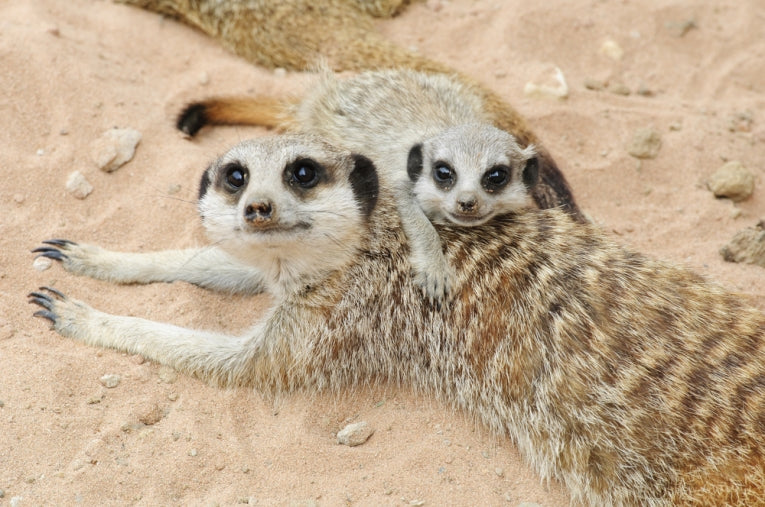We don't pay any attention to meerkats (suricates) any more. They signed the deadly advertising contract as a young group and now they are aging pop stars in the animal world. The serious publicity problem doesn't affect science however. The importance of social groups from bees to apes brings these small mongooses into focus alongside their distant Carnivore relatives.
Sociability is especially important as species develop socio-cognitive skills. Past interaction really matters to humans and is probably the prime factor affecting many other social interactions. Primates such as hamadryad baboons know how receptive their sexual partners are likely to be by calling and grunting with very special sounds, also affected by experience. Constant monitoring of a whole "mob" of meerkats would be ideal and with this unique species, the 3 researchers here hoped to get a result. Up to 50 individuals occur in these groups, dominated by a pair who monopolise breeding in the same way as in a wolfpack.
Calling is again important with the mob, partly to coordinate anti-predator behaviour. Airborne attack by raptors such as - is very effective, while ground based attack from - can be almost equally dangerous. Social rivalry becomes more prominent when late pregnancy distracts the dominant female and others attempt to breed. Certain individuals are the ones to watch apparently. They are frequently expelled until after the birth, so that less hanky-panky can take place. The high mortality rate of lone females is linked to the close dependence of species like meerkats on their social group. The research involved checking on whether the subordinates followed the position of the dominant female and then adapted their behaviour at all.
Head-down foraging activities dominate the animals' lives. The "close call" is another specialised and stereotyped sound dedicated to keep the foragers near to each other. Every 15 seconds, individualised calls are emitted, so playback of the dominant's calls when subordinates could be expelled was one good experiment. The other experimental period was spent outside of the expulsion period, when birth had taken place or before late pregnancy. The same subordinate females were used.
Stephan A. Reber, Simon W. Townsend and Marta B. Manser performed this intriguing scenario on wild populations in the Kurman River Reserve of the Kalahari. They are associated with the University of Zurich, as well as working at the Kuruman River Reserve and Pretoria University, both in RSA.
When they analysed video tape of the proceedings, the length of time individuals took to approach the speaker was measured. This resulted in a significant result with playback only from the dominant female. At any other time, she was treated as any other individual in the mob. The reactions were very flexible, but these subordinates in these situations of conflict (late pregnancy) took a greater time to approach and look in her direction (in this case, the direction of her call.) Neither her call at any other time, or any other call caused such distinct behaviour.
The call caused them to change direction several times and search for the female, all done very submissively. All of this points to adaptable behaviour by females, who develop the call system so that they can monitor the dangerous state of their own dominant female. They seem to be fear-conditioned by the possibility of their expulsion. That indicates the existence of several previous encounters. Taking these into account, the subordinates were observed performing mutual grooming with the dominant. Information processing must be involved just as in human interactions. The result avoids the loss of the subordinates from the group and increases their chances of reproducing later in life by simply surviving.
The authors suggest that both vertebrate groups that are known to be social and even invertebrates may have interesting social monitoring strategies. Their study now remains as a new step in behavioural science. The paper, Social monitoring via close calls in meerkats, was published in the Proceedings of the Royal Society B: Biological Sciences.















